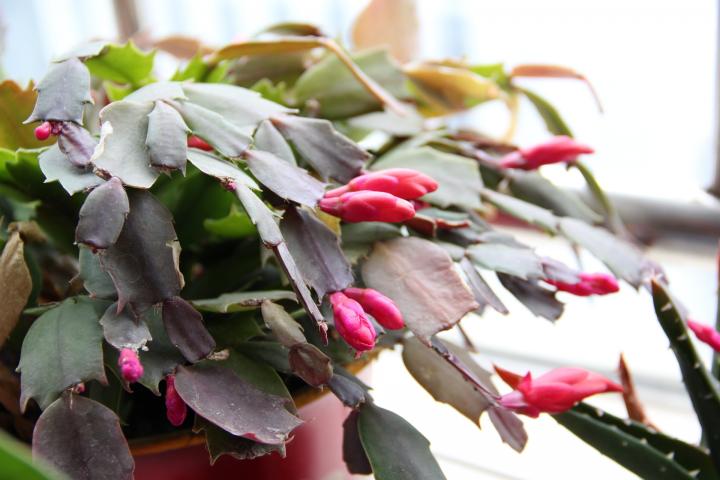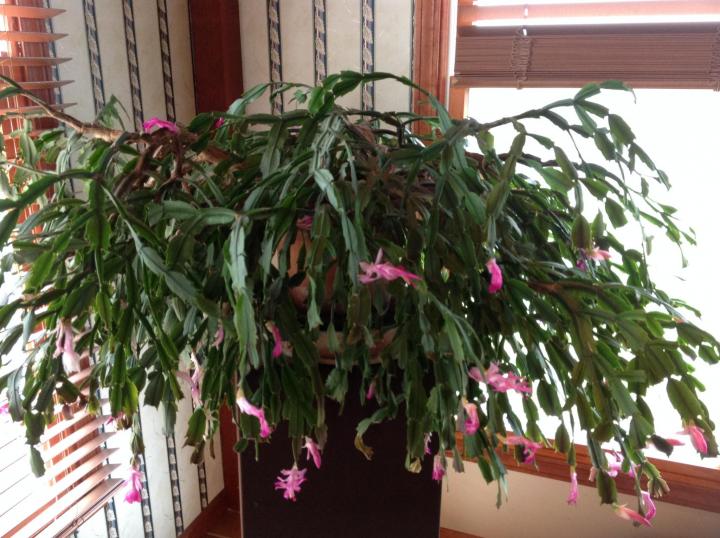
A Thanksgiving cactus in full bloom.
How To Care For a Christmas Cactus, Thanksgiving Cactus, or Easter Cactus
ADVERTISEMENT
I have what I believe is a Christmas cactus (could be an Easter one) and it blooms several times each year, including in the summertime! It seems to know the holidays, too, as it blooms around July 4th, among other holidays (Easter, Thanksgiving, and Christmas). It bloomed at Thanksgiving and is still producing some flowers. I do need to repot it though as the roots are coming up, though someone once told me that this type of plant likes to be pot-bound. I water it every couple of weeks and it is in a north/east-facing window where it gets the morning sun.
My Christmas cactus bloomed early November this year. I kept on a covered porch here in sunny South Carolina and watered it well. Even split it up for present and it was gorgeous in doors as temps dropped. Now it looks overwatered and wilted blooms. ? I think I need to repot? Maybe set it outside again? Fertilize?
The plant is likely a bit too wet! Indoors with less light, it needs a lot less water than it does outdoors. It may also just need some time to adjust to indoors and bounce back on its own.
I jus received a Christmas Cactus - my first ever - so this page was extremely informative I love this plant and do not want to kill it!
I have a cactus that is at least 100 years old I acquired it in the 80s repotted it then because pot was cracked. Do they get root bound or do I not worry .. looks a little droopy now and leaves just don’t look right. My house is cold. Staring to bloom . So going to make sure it’s watered Any suggestion











Comments